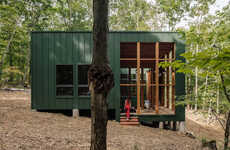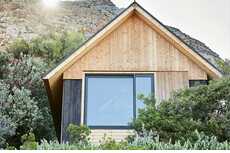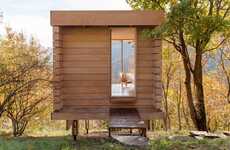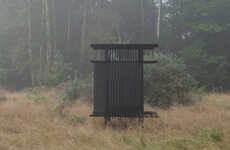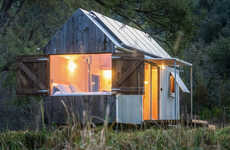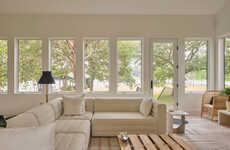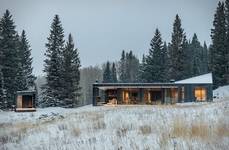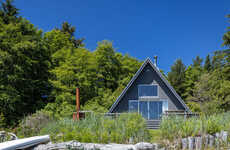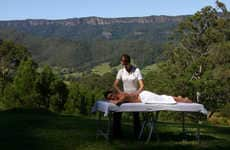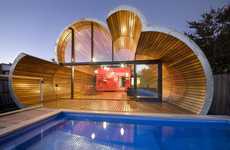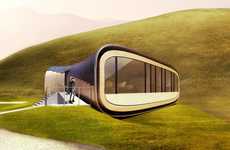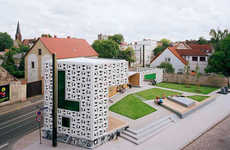
Olson Sundberg Kundig Allen Architects' Tye River Cabin
Jessica Marcel — January 31, 2010 — Art & Design
References: oskaarchitects & trendir
The Tye River Cabin, built by Olson Sundberg Kundig Allen Architects (try saying that five times fast), is a perfect example of how small isn't always negative. Sometimes, small is ideal.
The location of the Tye River Cabin is the area of Skykomish, Washington. It's a rural area with lots of trees and wildlife. For more from the Olson Sundberg Kundig Allen Architects, check out the links to their portfolio.
Implications - Eco-conscious consumers are eager to adopt green practices into their lifestyles to attempt to reduce their carbon footprints. These consumers desire structures and homes that will incorporate green initiatives into their construction, as well as being immersed in natural settings. Architectural companies can cater to green demographics by straying from suburb-style structures, and instead designing rural green homes.
The location of the Tye River Cabin is the area of Skykomish, Washington. It's a rural area with lots of trees and wildlife. For more from the Olson Sundberg Kundig Allen Architects, check out the links to their portfolio.
Implications - Eco-conscious consumers are eager to adopt green practices into their lifestyles to attempt to reduce their carbon footprints. These consumers desire structures and homes that will incorporate green initiatives into their construction, as well as being immersed in natural settings. Architectural companies can cater to green demographics by straying from suburb-style structures, and instead designing rural green homes.
Trend Themes
1. Green Homes - Architectural companies can cater to green demographics by straying from suburb-style structures, and instead designing rural green homes.
2. Small Homes - The Tye River Cabin is a perfect example of how small isn't always negative. Sometimes, small is ideal.
3. Eco-conscious Consumers - Eco-conscious consumers are eager to adopt green practices into their lifestyles to attempt to reduce their carbon footprints.
Industry Implications
1. Architecture - Architectural companies can cater to green demographics by straying from suburb-style structures, and instead designing rural green homes.
2. Construction - Architectural companies can cater to green demographics by straying from suburb-style structures, and instead designing rural green homes.
3. Real Estate - Eco-conscious consumers desire structures and homes that will incorporate green initiatives into their construction, as well as being immersed in natural settings.
4
Score
Popularity
Activity
Freshness

